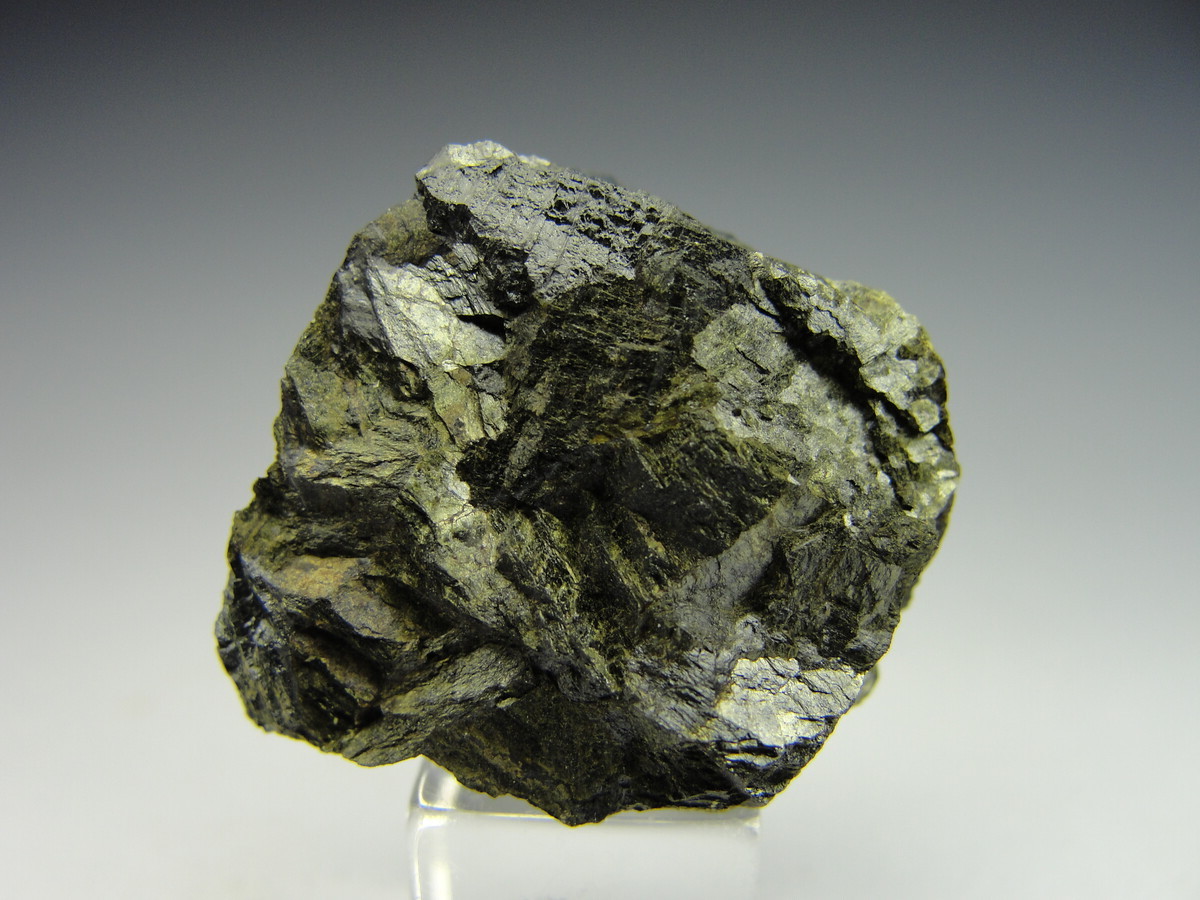
Ever wondered about the hidden gems beneath our feet? Meet alluaudite, a mineral with a rich history and intriguing properties. Named after French mineralogist François Alluaud, this mineral boasts a complex chemical formula: (Na,Ca)Mn2+(Fe3+,Mn2+,Fe2+,Mg)2(PO4)3. Found in granitic pegmatites and metamorphic rocks, alluaudite's dirty yellow to brownish hues make it stand out. With a hardness of 5½ to 6 on the Mohs scale and a specific gravity of 3.4 to 3.5, it's both tough and dense. From its magnetic properties to its educational value, alluaudite offers a treasure trove of information for geologists and mineral enthusiasts alike.
Key Takeaways:
- Alluaudite, named after François Alluaud, is a complex mineral with a rich history and diverse composition. Its unique properties make it an intriguing subject for mineralogists and enthusiasts alike.
- Alluaudite's occurrence in pegmatites and various geological settings provides insights into its formation and the conditions required for its development. Its potential applications and cultural significance highlight its importance in scientific research and industry.
Alluaudite: A Mineral with a Rich History
Alluaudite is a mineral that has intrigued scientists and enthusiasts alike. Its unique properties and historical significance make it a subject worth exploring. Let's dive into some fascinating facts about alluaudite.
-
Alluaudite was named by Alexis Damour in 1847 in honor of François Alluaud (II), a French ceramicist and mineralogist. François Alluaud (II) made significant contributions to mineralogy, including the discovery of the Chanteloube material.
-
The chemical formula for alluaudite is (Na,Ca)Mn2+(Fe3+,Mn2+,Fe2+,Mg)2(PO4)3. This complex formula indicates the presence of sodium, calcium, manganese, iron, and magnesium, showcasing its diverse composition.
Crystal Structure and Physical Properties
Understanding the crystal structure and physical properties of alluaudite helps in identifying and studying this mineral.
-
Alluaudite crystallizes in the monoclinic crystal system. This system contributes to its unique optical and physical properties, making it a subject of interest for mineralogists.
-
The hardness of alluaudite ranges from 5½ to 6 on the Mohs hardness scale. This relatively high hardness means it can withstand significant mechanical stress, making it a durable mineral.
-
The specific gravity of alluaudite is between 3.4 and 3.5. This indicates that alluaudite is denser than many common minerals, contributing to its robust structure.
Color and Occurrence
The color and occurrence of alluaudite provide clues about its formation and the environments in which it can be found.
-
Alluaudite typically exhibits a dirty yellow to brownish yellow color. It can also appear grayish green, surficially dull greenish black, brownish black, or black when altered. These variations are due to different cations and their oxidation states.
-
Alluaudite is commonly found as an alteration product of varulite and arrojadite-(KFe). It occurs in granitic pegmatites and other metamorphic rocks, often in association with other phosphate minerals.
-
The type locality for alluaudite is in the Alluaudite Group. This group includes various Na-Mn-Fe-bearing phosphates. The original alluaudite from the type locality did not contain appreciable ferrous iron but has since been refined to include ferrous iron-bearing varieties.
Synthesis and Structural Investigation
Scientists have developed methods to synthesize alluaudite and investigate its structure in detail.
-
Alluaudite can be synthesized through various methods, including the flux technique. This method involves using a high-temperature flux to create single crystals of alluaudite with specific compositions.
-
Structural investigations of alluaudite have revealed its complex structure. Studies using X-ray Rietveld analysis, infrared spectroscopy, and Raman spectroscopy have provided detailed insights into the mineral's structure and bonding.
Magnetic Properties and Mossbauer Spectroscopy
The magnetic properties and Mossbauer spectroscopy of alluaudite offer a deeper understanding of its composition and behavior.
-
Alluaudite exhibits magnetic properties due to the presence of iron and manganese. Magnetic studies have shown that alluaudite can display both ferromagnetic and antiferromagnetic behavior depending on the specific composition and conditions.
-
Mossbauer spectroscopy has been used to study the iron content in alluaudite. This technique provides information about the oxidation states and coordination environments of iron in the mineral.
Powder Diffraction Data and Relationship to Other Species
Powder diffraction data and the relationship of alluaudite to other species help in identifying and classifying this mineral.
-
Powder diffraction data for alluaudite show characteristic peaks at specific d-spacings. These peaks help in identifying alluaudite and distinguishing it from other minerals with similar compositions.
-
Alluaudite is part of the alluaudite supergroup. This supergroup includes sixteen Na-Mn-Fe-bearing phosphates occurring in granitic pegmatites. The alluaudite supergroup also includes nineteen Na-bearing phosphates.
-
A new nomenclature scheme for the alluaudite supergroup was introduced in 2019. This scheme helps in standardizing the naming conventions for these minerals, making it easier to classify and study them.
Occurrence in Pegmatites and Geological Settings
Alluaudite's occurrence in pegmatites and various geological settings provides insights into its formation and the conditions required for its development.
-
Alluaudite is commonly found in granitic pegmatites. These pegmatites provide a unique environment for the formation of complex phosphate minerals like alluaudite.
-
Alluaudite can form through the alteration of other phosphate minerals such as varulite and arrojadite-(KFe). This process involves chemical reactions that transform the original minerals into alluaudite.
-
Alluaudite is found in various geological settings, including metamorphic and igneous rocks. Its presence in these settings indicates that it forms under specific conditions related to the geological history of the area.
Mineralogical Studies and Applications
Mineralogical studies and potential applications of alluaudite highlight its importance in scientific research and industry.
-
Mineralogical studies have focused on the crystal structure, magnetic properties, and Mossbauer spectroscopy of alluaudite. These studies have provided detailed insights into its composition and behavior.
-
Alluaudite's unique properties make it potentially useful in various applications. For example, its magnetic properties could be exploited in magnetic materials, and its phosphate composition might be relevant in fertilizers or other industrial processes.
Educational Value and Scientific Research
Alluaudite serves as an excellent educational tool and continues to be a subject of scientific research.
-
Alluaudite is an excellent teaching tool for students of mineralogy and geology. Its complex composition and unique properties make it an ideal subject for studying crystal structures, chemical bonding, and geological processes.
-
Scientific research on alluaudite continues to advance our understanding of this mineral. Recent studies have explored its structural and magnetic properties using advanced techniques like X-ray diffraction and Mossbauer spectroscopy.
Cultural Significance and Conservation Efforts
The cultural significance and conservation efforts related to alluaudite highlight its importance in the history of mineralogy.
-
Alluaudite, named after François Alluaud, reflects the cultural significance of mineralogy in France during the 19th century. The naming of minerals after notable figures highlights the importance of recognizing contributions to scientific knowledge.
-
Efforts to conserve and study alluaudite are crucial for understanding its geological and mineralogical significance. Preserving samples and documenting their occurrence helps in maintaining a comprehensive record of mineral diversity.
Future Research Directions
Future research on alluaudite may uncover new applications and provide deeper insights into its properties and behavior.
- Future research on alluaudite may focus on its potential applications, further structural investigations, and exploring its occurrence in different geological settings. Advances in analytical techniques will likely provide deeper insights into the mineral's properties and behavior.
The Fascinating World of Alluaudite
Alluaudite is a mineral with a rich history and unique properties. Named after François Alluaud, it boasts a complex chemical formula and crystallizes in the monoclinic system. With a hardness of 5½ to 6 on the Mohs scale and a specific gravity between 3.4 and 3.5, it’s pretty tough. Its colors range from dirty yellow to brownish black, depending on its composition.
Found in granitic pegmatites and metamorphic rocks, alluaudite often forms as an alteration product of other phosphate minerals. Its magnetic properties, due to iron and manganese, make it intriguing for scientific research. Studies using techniques like X-ray diffraction and Mossbauer spectroscopy have shed light on its structure and behavior.
Alluaudite’s educational value and potential applications in various fields make it a mineral worth studying. As research continues, we’ll likely uncover even more about this remarkable mineral.
Frequently Asked Questions
Was this page helpful?
Our commitment to delivering trustworthy and engaging content is at the heart of what we do. Each fact on our site is contributed by real users like you, bringing a wealth of diverse insights and information. To ensure the highest standards of accuracy and reliability, our dedicated editors meticulously review each submission. This process guarantees that the facts we share are not only fascinating but also credible. Trust in our commitment to quality and authenticity as you explore and learn with us.


